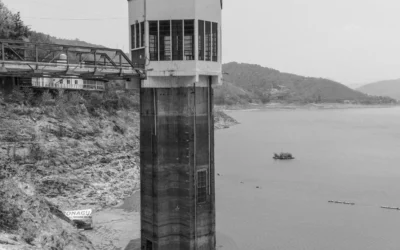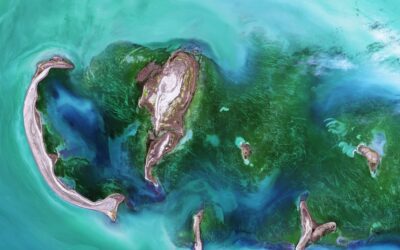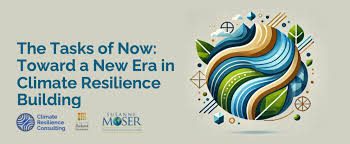from blog by Nnimmo Bassey…When one part of an ecosystem is destroyed, it impacts or destroys all the other parts. This means, nothing exists in isolation of everything else. Thus, the web of life is the interrelationships that hold everything together – something we often do not think about.
The last drops of Mexico City
by Rodrigo Cervantes and Jérôme Sessini on longlead.com…Every day, for most of her life, Norma, a 68-year-old woman from the outskirts of Mexico City, has struggled to get something that many of us take for granted: drinking water.
We’ve failed to stop climate change — this is what we need to do next
by Ben Spencer in The Sunday Times…While we can still limit warming by cutting emissions, we now face having to adapt to more extreme weather
The rise of the degrowther right
by David Broder in Jacobin…A new conservative environmentalism that blends anti-modernism with nationalism and austerity is spreading across Europe.
The tasks of now: Toward a new era in climate resilience building
by Susanne Moser, et al…As the climate crisis intensifies, so does the need for philanthropic investments that are strategic,
innovative, and sustained over the long-term. This report identifies a variety of funding opportunities
that align with key transformative strategies.
Exploring critical perspectives on climate security
from NATO Climate Change Center for Change and Security Centre of Excellence…Participants in this workshop were encouraged to re-imagine climate security research by focusing on longer timeframes, deeper cultural connections, and broader spatial scales, and in doing so learn more about the importance of considering humans, non-human entities, and biodiversity as crucial factors in addressing climate change in a nuanced and sustainable manner.
More in this category
Publication: Extreme temperatures and the profitability of large European firms
by Bellocca, Gian Pietro Enzo, et al in e-Archivo…The lack of a clear negative effect of extreme temperatures over firm’s profitability points out one of the reasons why it is so difficult to fight against climate change, while being harmful, it can be profitable.
Canada’s wildfires were a top global emitter last year, study says
by Manuela Andreoni in The New York Times…The blazes produced more planet-warming carbon than almost any country, researchers found. That could upend key calculations on the pace of global warming.
A global foresight report on planetary health and human wellbeing
by UNEP in Navigating New Horizons…As the leading global authority on the environment, the United Nations Environment Programme
(UNEP) plays a critical role in keeping the environment under review and finding solutions that inspire,
inform and enable nations and peoples to improve their quality of life without compromising that of future generations.
NEOM is a city of the future. The land is the cost.
by K.O. in Atmos…NEOM has been hailed as the future of the climate-resilient, smart city. But, for local communities, its construction threatens displacement and exploitation.
Silicon dreams and carbon nightmares: The wide boundary impacts of AI
by Nate Hagen in The Great Simplification…What are the environmental implications of a tool with unbound computational capabilities aimed towards goals of relentless growth and extraction? How could artificial intelligence play into the themes of power and greed, intensifying inequalities and accelerating the fragmentation of society? What role could AI play under a different set of values and expectations for the future that are in service to the betterment of life?
Column: How ‘Sesame Street’ can prepare kids for climate disasters
by Sammy Roth in the LA Times…Twenty-three years ago, “Sesame Street” aired a remarkable series of episodes during which the iconic puppets and their human friends must recover from a hurricane. One focus is Big Bird’s struggle to come to terms with the destruction of his nest.
Living Landscapes: rethinking biodiversity in Southern Africa
by Oak Foundation….One of the strengths of the course is that the students taking part already work in conservation areas where they can make a difference, such as biodiversity conservation, natural resource management, and governance (land, water, and the ocean).They come with a wide range of expertise – from government agencies, conservation organisations, climate justice, and not-for-profit organisations. This means they bring experience with them, which they can share with the group.
Extreme wildfires have doubled in frequency and intensity in the past 20 years
by Victor Fernandez Garcia & Christina Santin in Wired.com….The doubling in extreme wildfires adds to a complex picture of fire patterns and trends. This new evidence underscores the urgency of addressing the root causes behind worsening wildfire activity, such as land cover changes, forest policies and management, and, of course, climate change. This will better prepare us for these extreme fires, which are near-impossible to combat using traditional firefighting methods.
NEOM is a city of the future. The land is the cost.
by K.O. in Atmos….NEOM has been hailed as the future of the climate-resilient, smart city. But, for local communities, its construction threatens displacement and exploitation.
Denmark unveils ‘groundbreaking’ roadmap towards plant-based food
by Daniel Clark in Plant Based News…Plant-based foods are “the future,” according to the country’s Minister for Food
Insufficient pollinator visitation often limits yield in crop systems worldwide
by Katherine J. Turo in Nature….Declining pollinator populations could threaten global food production, especially if current crop yields are limited by insufficient pollinator visitation to flowers, in a phenomenon referred to as ‘pollinator limitation’.
Canada’s 2023 wildfires outsmoked global aviation, yet emissions go uncounted
by Liz Kimbrough in Mongabay….The climate crisis appears to be driving this trend toward more extreme fire seasons. Higher temperatures caused by climate change dry out the landscape and make forests more susceptible to fire. The researchers point out that Canada and other northern regions are warming up about twice as fast as the rest of the world.
Reporting on Doomsday Scenarios
from 60 Minutes….From 2022, Jon Wertheim’s report on “preppers” who are gearing up for extreme catastrophes.
Millaray Huichalaf: Mapuche woman’s 15-year defence of a sacred river
by Ali Qassim in LAB…Mapuche leader Millaray Huichalaf defends the Pilmaiken River through legal challenges, international alliances, and the arts
Extreme wildfires have doubled in 2 decades, study finds
by Austyn Gaffney in The New York Times…In a changing climate, extreme wildfire events are becoming far more common and more intense, according to a new analysis.




